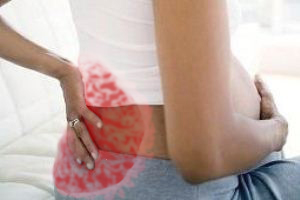 Pregnancy involves a broad range of rapid changes to a woman’s physiology, including changes that can vary widely from one woman to the next. Sciatica is a common symptom associated with pregnancy and is caused by pressure or injury to the sciatic nerve. The common signs of sciatica are weakness, tingling, numbness and burning pain in the legs, back and buttocks.
Pregnancy involves a broad range of rapid changes to a woman’s physiology, including changes that can vary widely from one woman to the next. Sciatica is a common symptom associated with pregnancy and is caused by pressure or injury to the sciatic nerve. The common signs of sciatica are weakness, tingling, numbness and burning pain in the legs, back and buttocks.
As the fetus grows inside the mother’s womb, the uterus expands and occasionally places pressure against the sciatic nerve in the lower spinal column. This pressure can become especially evident during the third trimester as the baby begins to shift toward the proper birthing position. The baby can end up resting directly upon the nerve, creating significant pain.
Approximately half of all pregnant women who suffer from sciatica recover within six weeks of childbirth and almost all (90%) recover within 3 months, although there is a small percentage for whom the pain continues for much longer.
Due to the dangers of taking painkillers and other medication during pregnancy, physicians generally recommend not taking anti-inflammatory drugs, such as Ibuprofen. Instead, there are a number of exercises and other options to help relieve the pain of sciatica before and after childbirth.
- Take frequent rests and avoid spending too much time on your feet.
- Avoid wearing heeled shoes that may jar your spine. Soft, flat shoes may be preferable, but if they don’t help, try other types of shoes with different types of heel support.
- Avoid lifting or carrying heavy objects, but if you absolutely have to, be sure to bend from your knees and maintain a straight back.
- Place heat or ice packs on the location of the pain. Use ice for the first couple of days and then heat after that.
- Take a warm bath. The heat will help soothe the pain and the buoyancy will take the pressure off.
- Alternative therapy such as chiropractic care or prenatal massage (by a trained and licensed therapist) can also provide relief.
- Low impact physical activities such as swimming and prenatal yoga can help stretch the body and readjust the baby’s position, thus taking the pressure off the nerve and reducing the pain.
If the sciatica persists during labor, then the range of positions available for delivery may be limited due to the additional pain. If you suspect that this may become an issue for you, one alternative may be to ask the hospital or other facility to make a birthing pool available for your delivery as this will provide a warm and buoyant medium for reducing the pressure and pain.
Sciatica is generally a temporary discomfort for pregnant women, one that lasts not much longer than the pregnancy itself, and can be treated naturally without risk to the baby or mother.

